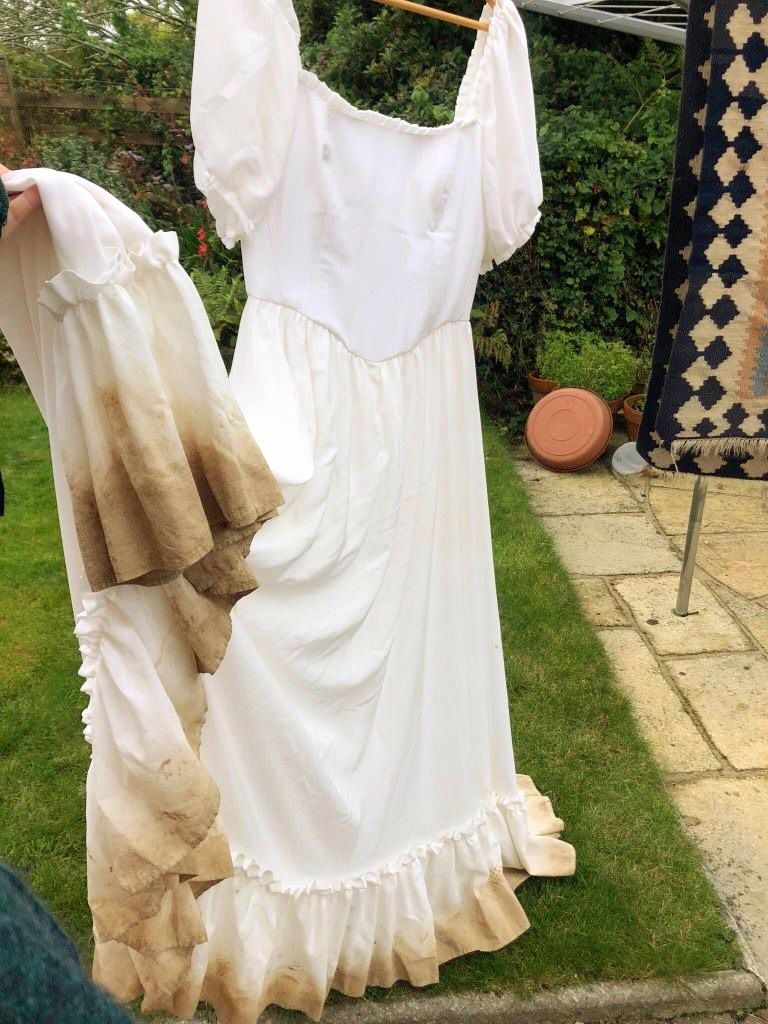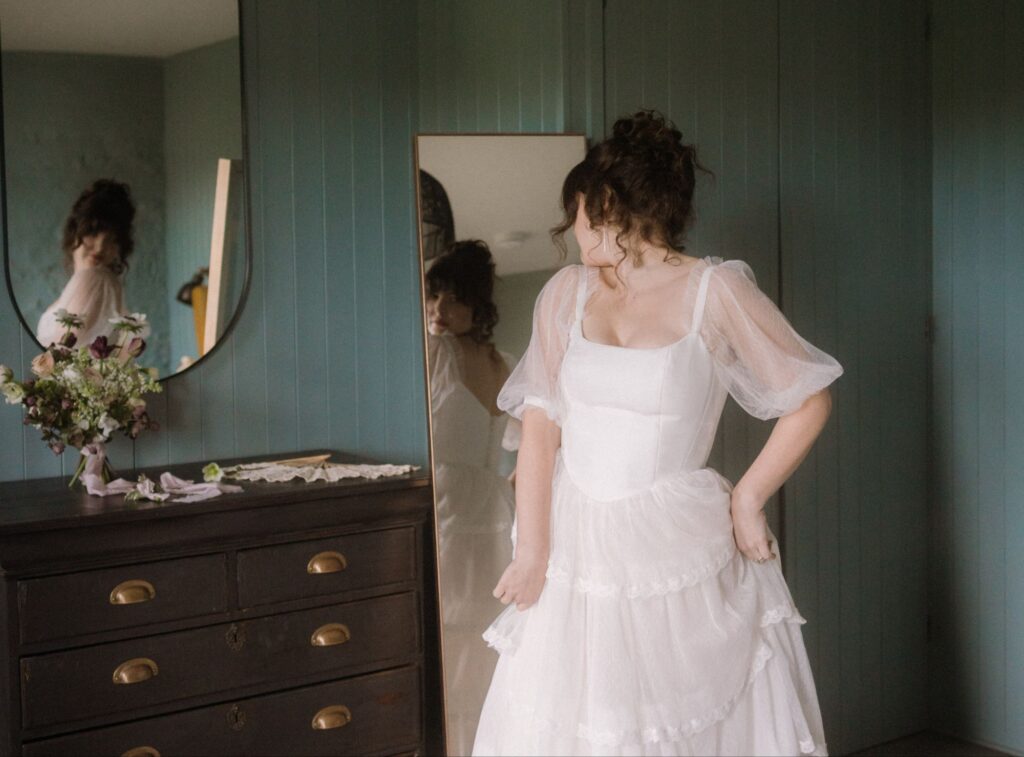I think a lot about the concept of “heirloom quality” when I’m designing and making my wedding dresses. I’m really aware that this is the only time most people will never have a dress made specially for them. I balance a lot of factors to be able to deliver these dresses within my typical budgets, these are some of the main things I’m thinking about when designing to make sure you’re getting a really beautiful heirloom quality wedding gown.

1) The highest quality silks. I’m a huge fan of looking at historical examples of clothing, and one thing that never feels dated is really beautiful silk. Silk can do so many things really well- I love the lighter silks like organza and chiffon for creating the whimsy in my designs but a simple silk crepe gown never goes out of fashion. This, in part, is why I try and steer brides away from lace, because all lace available within my typical budget is made out of synthetic fibers, and I know from altering dresses from the 70s and 80s that they tend not to age as well.
2) High quality finishes. I love using french seams, silk linings and zip guards that popper to keep my wedding dresses in place. I often finish the inside of my wedding dresses by hand, and have hand embroidered labels, because I think it’s beautiful to have evidence of the hands that made the dress. We tend to wear clothes that have been made over seas and finished entirely by machine, so this is a unique opportunity to feel connected to the maker of your wedding dress for years to come.


3) It needs to be washable. Not dry cleanable, but truly washable. I fully support getting your dress muddy, it makes for amazing photos and I would hate for someone to miss out on any of the fun of a wedding because they worry about a muddy hem. For a garment to survive being worn over time, particularly if it is made out of silk, it needs to be able to be washed. Silk is hardier than it gets credit for, and I rarely have issues from getting it wet, but it absolutely hates sweat because it has an acidic PH. I’ve heard a lot of horror stories of dresses that look clean going away in a garment bag, only to discover a stain has been brewing and once it has developed it is much harder to get out. When I’m choosing fabrics and finishes I’m thinking about how well they will survive over years of use and washing.
4) It needs to be designed with future uses in mind. Until 100 years ago, when you bought your wedding dress you would never have dreamed of wearing it only once. It simply became your new Fancy Outfit and people would wear them to christenings, the theater, even to other people’s weddings. In the 1930s fashion and bridal fashion stopped talking to each other and so dresses became less useful to re-wear, and women started keeping them in keepsake boxes for their daughters and grandchildren to wear. Slowly though, women are noticing how rarely this happens, and are instead reusing their wedding dresses themselves. One of the joys of using 100% silk wherever possible in my gowns is that they can be dyed after the wedding so they have longer life. I use deeper seams than the industry standard so that it can be let out in the future. Sometimes I design layered separate garments to make re-use easier.I really feel that the best way to honour the quality of the fabric and the workmanship in a handmade gown is to wear it over and over, repairing and reworking it as often as possible.


5) The Amy March Factor, when I’m designing I try and make sure there is something in the design that Amy March would get excited about. Amy March loves simple, well made details. She’s not above a little razzle dazzle. She’s a girls girl. Amy March loves a velvet bow, a delicate lace trim in a seam, a little frill. The Amy March Factor helps the dresses feel timeless- I want to include a detail that appeals to women from across generations.
